Health and Strength Conference 2016 Presentations
Return to Health and Strength Conference 2016
See Presenter Interviews
Jon Bruney
The Secrets of Neuro-Power
Why should Neuro-Grips be in every athlete’s toolbox? Neuroscience studies have shown that a large portion of the brain is committed to controlling and using the hands. Therefore, by increasing the difficulty of grip strength in an exercise the mind-body connection is also increased. Neuro-Grips are the perfect tools to increase your Neuro-Power. These implements can be used for so much more than a basic push-up.
Discover how to use Neuro-Grips for:
- Core strength
- Shoulder Health
- Wrist strength and mobility
- Balance skills
- Breaking strength plateaus
- Increased muscle mass and muscle tone
- Problem solving and creativity
- Better body control
- Increased performance
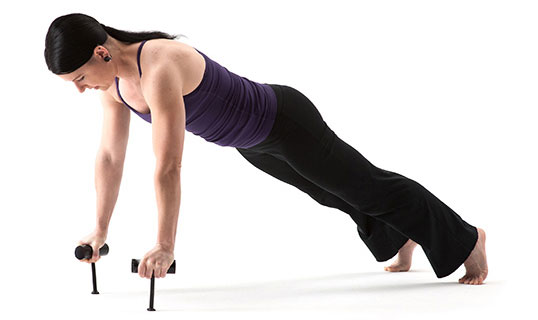
Advanced techniques will include:
- Sensory deprivation
- How to use the "X-Series" and other band drills for total body tension
- Harnessing the power of leverage
- Occlusion
- The "Moving Plank" series
Commando Cardio
- Performance-Based Energy Output That Creates a Metabolic Demand
- Enter the Neuro-Burner—The Weapon of Choice for Commando Cardio
- Advanced Surge-Sets
- How the Neuro-Burner can reset your conditioning governor

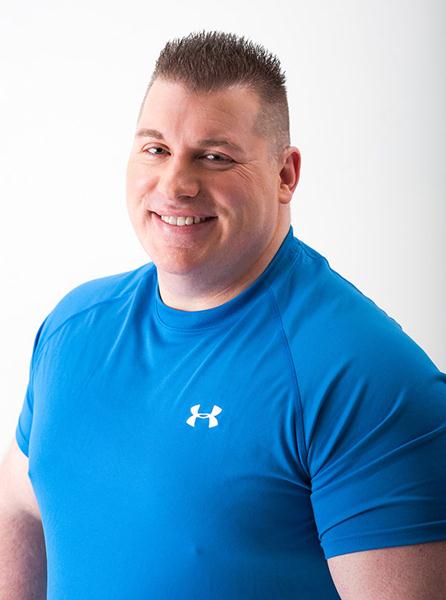
Jon Bruney is the author of the breakthrough Dragon Door title Neuro-Mass and of two forthcoming Dragon Door titles, one a guide to the taking advantage of the Neuro Grips and one on taking advantage of the Neuro-Burner.
Logan Christopher
How to Use Hypnosis for Fitness and Strength
Simple and Advanced Hypnosis Methods for Instant Strength Gains, Body Transformation and More
At last year’s conference, RKC Team Leader Katie Peterson leaped from a previous PR of 2 one-arm pushups to 7 in just 6 minutes. That’s a 350% increase in a very, very tough drill.
And Katie achieved this feat with Logan’s mental coaching methods only. No change in physical technique. Pure mind.
This year Logan will deep-dive you into different methods to accomplish similar strength breakthroughs, with the power of hypnosis alone.
The good news is you don’t need to be a master hypnotist to get positive and tangible results. Instead you’ll learn brain-dead-simple methods that can add reps to any exercise. And you’ll get to experience it in real time, live at the event.
By end of session, you’ll own this as a skill you can use over and over again. Plus, you’ll see tons of real examples on how you can use it to increase strength, win competitions, transform your body, get clients better results, aid in recovery and so much more…
You’ll also discover:
- A Firefighter’s Experience: Increasing Grip Strength by 40% or Feeling as Weak as a Baby
- How Two Buffalos Added 100 Pounds to Logan’s Deadlift
- The 9 Myths of Hypnosis
- How to Use Hypnosis to Add 20 lbs. to a Hardgainer in One Month
- Bypassing Skepticism
- A Simple Induction Anyone Can Do
- Why Hypnosis Starts Before Hypnosis Starts
- How to Distort Time—for One Month of Gains in a Single Session
- Methods of Milton Erickson, the Greatest Hypnotist of All Time
- Cause-Effect Linkage and How it can Redirect Your Subconscious Mind
- Why Cirque du Soleil can Make Muscle Ups Easy
- How Hypnosis Helped Logan Win a Strongman Competition
- Using Hypnosis Conversationally with Your Clients
The Logan Christopher Interview
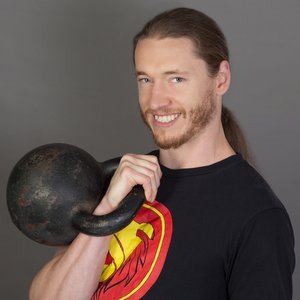
Born without genetic gifts, a weak and scrawny Logan Christopher sought out the best training information in his pursuit of super strength, mind power and radiant health. Nowadays, he’s known for his famous feats of pulling an 8,800 lb. firetruck by his hair, juggling flaming kettlebells, supporting half a ton in the wrestler’s bridge and more. Logan is the author of the acclaimed Dragon Door title Mental Muscle.
Andrea Du Cane
Secrets of The Windmill
A Deep Dive into The Athletic Benefits of This Remarkable Yet Under-Utilized Exercise
The Windmill can improve both upper-body and lower-body flexibility, mobility, stability and strength—and is the next best step after perfecting the Get Up.
The obvious benefits—and the hidden benefits:
The obvious benefits of the windmill are similar to the Get-Up and Arm Bar. The windmill builds shoulder stability and strength, at the same time the T-spine is developing mobility and flexibility.
The hidden benefit and challenge of the Windmill is the flexibility that is required of the lower body. The often intense fascial stretch of the IT band of the loaded leg and the stretch on the hamstring/adductor of the unloaded side, are challenged by performing a proper Windmill.
The common mistakes and the proper way to do it:
The set-up is everything! Know the direction your feet are pointing.
Correct spinal alignment is crucial for a safe and effective windmill.
The movement pattern is spinal flexion & T-spine rotation.
Know where the load is carried—how much weight is on the front foot?
Preparations:
Stretches to prepare for the Windmill: chest, hips and legs.
Progressions:
Kneeling windmill: take the legs, hips & feet out of it.
Low windmills.
Modifications for older or de-conditioned populations:
Kneeling windmills with bands. Standing windmill modifications.
Upper body. Lower body.
Advanced double kettlebell Windmills
How to integrate Windmills into your workouts
The Andrea Du Cane Interview

Andrea Du Cane is Director of Certifications for Dragon Door Publications, a Master Kettlebell Instructor, CK-FMS certified, CICS certified, Primal Move National Instructor and RIST, ZHealth certified, and has a BA in Psychology from the University of Minnesota, ACE-GF. She has written and produced two DVD’s The Kettlebell Goddess Workout DVD, a top selling Kettlebell DVD on Amazon.com and The Kettlebell Boomer. Her DVD, Working With Special Populations, was filmed at the RKC Level II. Her Ageless Body Book was released fall of 2011. She is featured in the From Russia With Tough Love video and book, and was one of the athlete’s featured in the TRX-Kettlebell Power DVD.. She was featured on Breaking Muscle website as the February 2012 coach of the month. She is a featured expert for NSAA, website program.
Marty Gallagher
CrossCore® HardCore—"A Gym in a Bag"
Hardcore Progressive Resistance Training Using a Portable Training Device
Strength training is a foundational athletic attribute and first amongst the five bio-motor skills: strength, speed, endurance, agility and flexibility. Strength is the premier bio-motor skill because it bleeds over into the second bio-motor ability, speed. Without strength, there is no speed.
Acquiring strength is an eternal core quest and very few succeed because the methodology they select is invariably flawed. We live in an era where seductive choices overwhelm us. How does the sincere seeker of strength sort through all the possibilities and find the golden needle in the strength haystack?
Barbells and dumbbells, expertly used, are the gold standard tools for acquiring maximum human strength. Is it possible to obtain the equivalent of a barbell/dumbbell workout using a portable training device, one that fits in a small bag and weighs less than five pounds? The answer is yes—assuming you have a revolutionary new tool and follow a highly specific and nuanced system of usage.
The portable training device is called the CrossCore® and the protocol used is called CrossCore® HardCore. When this tool is used in conjunction with this protocol, results derived from gold standard barbell/dumbbells can be replicated.
The goal for any tool or method is two-fold…
- Does its expert usage improve some aspect of human performance?
- Does the expert use of the tool improve the user’s physique?
These two irreducible goals are the eternal benchmark for any tool and/or method. Does the tool, used expertly and with due diligence, deliver tangible, measurable, irrefutable results? Does the tool favorably reconfigure the user’s physique?
So what makes this tool and strategy so unique and how do the results delivered stack up to the promises made? How do we know that this is the golden needle in the strength haystack?
This device and protocol had its genesis in the Spec Ops community and is in heavy use by active duty elite fighters as a deployment tool. When assigned to Forward Operating Bases without formal fitness facilities, the soldiers sought a tool or device that could replicate results obtained from a hardcore workout using barbells and dumbbells?
A legendary strength coach at the behest of the spec ops community devised a unique strategy: the tool and system of usage were developed and tested on (current) world record holding powerlifters. The training template introduced precise technical patterns designed to mimic classical barbell/dumbbell movements. These precision techniques were then wedded to a strategy that introduced "intensity amplifiers" designed to increase "payloads."
- Does a targeted muscle care what tool is used to inflict the inroad? If we create an identical amount of physiologic stress and stimulation, if results are identical – what matter the tool? What matter if this was achieved with a pair of dumbbells, a barbell or the CrossCore®?
This tool and this strategy have already been vetted by world record holding strength athletes and active duty spec ops fighters. Experience a single set using the HardCore approach and those in the know instantaneously morph from cynic into convert. The degree of difficulty is astounding and that is critical for effective progressive resistance training: this tool has an inherent instability that is used to our muscle-building, strength-infusing advantage.
Without the protocol, the tool devolves into a toy. With precision use, the CrossCore® becomes a tool that fulfils the need for a truly effective portable progressive resistance training device and fulfils both eternal twin goals: diligent and precise use of CrossCore® HardCore improves performance and diligent and precise use of CrossCore® HardCore improves the physique of the user.
- Seeing is the next best thing to doing: we will go through a sample CrossCore® HardCore workout so attendees may get a feel and flavor for the tool and the "one and done" protocol. This gym in a bag delivers on its promises.
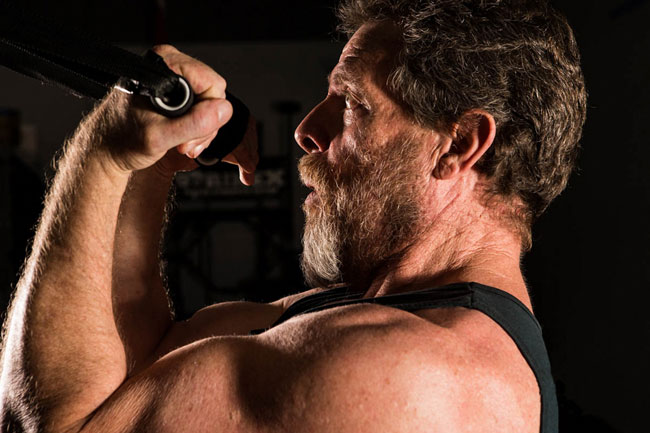
Marty Gallagher has been involved in high-level athletics for over 50 years. He captured his first national title and set his first national records as a 17-year old teenage Olympic weightlifter in 1967. In May of 2013 he set his most recent national records as a 64-year old powerlifter. He won the 1992 IPF world masters powerlifting title and has taken silver and bronze medals in world championships. He is a six-time national champion masters powerlifter.
As a coach he guided Team USA to the IPF world team title in 1991 and coached Black’s gym to five national powerlifting team titles. He was mentored by the 1st world powerlifting champion Hugh "Huge" Cassidy and Gallagher in turn mentored hall-of-fame powerlifting world dominator "Captain" Kirk Karwoski. Gallagher competition coached Ed "King" Coan, the world’s greatest powerlifter, along with iron immortals Doug Furnas, Lamar Gant and Mark Chaillet. Marty works with the military elite spec ops fighters (in this country and abroad) along with governmental special units within various agencies.
As a writer Gallagher is widely read and considered one of the finest writers operating within the health, nutrition, bodybuilding, strength and athletic training genre. He has had over 1,000 articles published since 1978, including 232 weekly ‘ask the expert’ fitness columns for the WashingtonPost.com and 89 articles published during a ten year relationship with Muscle & Fitness and Flex magazine. Gallagher’s biographic on Ed Coan was called, "the greatest powerlifting book ever written," by the late Joe Weider. Rock star Henry Rollins called the Coan book, "Awesome!" Dr. Jeff Everson described Gallagher’s Magnus opus, The Purposeful Primitive" A literary masterpiece." Gallagher lives in rural Pennsylvania.
Rolando Garcia III
Relationship Before Results
The Art of Intrinsic Excellence—and how to teach your clients to find the drive within
You want every client you are training to achieve results. These results can vary from reduced body fat, increased athletic performance, or just feeling good in their bodies and about themselves. As professionals, we educate ourselves in subjects and scientific methods that promise to deliver on results as they relate to a client's health, fitness, and wellness.
There's a catch—you know it and all your clients know it: only the client can get their results. You can't deadlift for them, do their cardio for them, eat and sleep right for them, and expect THEM to get their results.
How then, can your entire business be built on results... that you cannot directly deliver, manage, and control? More importantly, what is it that you can actually affect, manage, and control—as it relates to your clients' health, wellness, and overall experience?
Based on his years of experience in hiring and developing successful trainers and teams, Rolando believes that the professional cannot deliver strong results if they do not manage the coach/client relationship first through the development of:
- An active and compassionate communication style
- Emotional intelligence and self-reflection
- Influence and leadership skills
Rolando will share proven tools and methods to sharpen your proficiency in these relationship-building skills—so you can become more successful in helping your clients achieve the enduring results they crave…
The Rolando Garcia III Interview
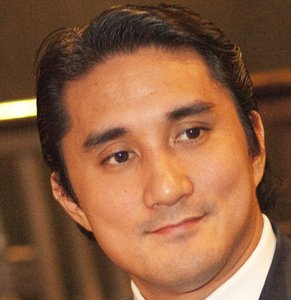
Rolando Garcia III, author, speaker, and thought leader in the realm of success and business, has been featured in Forbes, the NY Post, Shape Magazine, and Athlete's Quarterly. He is the author of the ground-breaking book, Intrinsic Excellence. He manages one of the top teams of fitness professionals in the industry, in NYC's premiere training facility, located in Manhattan's Time Warner Center. He is also a lifelong fitness coach and martial artist.
Mike Gillette
Ring Training for Athletes
Using Rings to Build Multi-Dimensional Strength in a Multi-Athlete Environment
Despite their increasing presence in warehouse gyms all over the world, gymnastics rings are still primarily associated with their sport of origin; gymnastics. As a result, misconceptions persist that rings are either somewhat mysterious or somehow beyond the reach of "regular" athletes.
The reality though, is altogether different. Rings are versatile in application and scalable for differing levels of ability. Further, they are ergonomically friendly for athletes and economically friendly for coaches.
In this presentation, performance coach Mike Gillette breaks down many of his own favorite progressions and techniques for real-world athletic strength-building. If you're a coach or trainer, you'll learn exactly how to use gymnastics rings to build strength in aspiring and advanced athletes. Topics will include:
- Pros & cons of permanent versus mobile ring set-ups
- Considerations for multiple ring set-ups
- Circuit-training with rings
- Stability training with rings
- Unilateral training with rings
- Using rings to manipulate range-of-motion
- Deliberate destabilization techniques
- Combining suspension and friction training techniques
- Integrating rings with other training modalities
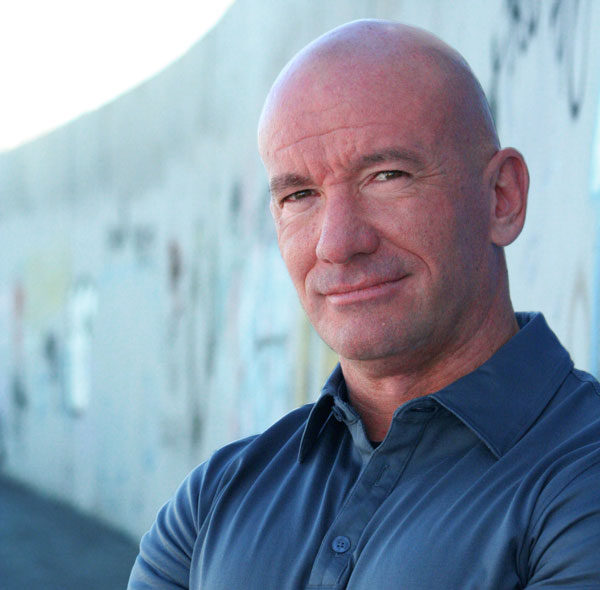
Mike Gillette is a best-selling author, speaker and performance coach. His books on mental and physical self-improvement include the Dragon Door title, Rings of Power: The Secrets of Successful Suspension Training. His abilities in harnessing body and mind have been documented by Ripley's Believe it or Not and Guinness World Records. He is a former Army Paratrooper, Police Officer and Executive Bodyguard who has trained elite military units, D1 athletes and members of Cirque du Soleil, Las Vegas.
Angelo Grinceri
Step It Up
How to increase variability with any exercise using one concept—going further than rep count, rest durations, and load.
- How to adapt locomotion principles to resistance training
- How to utilize the three phases of Intrinsic Strength Training (IST) in our major lifts
- How to train the stance leg, to control load in various positions—and remain balanced
- How to focus on more balance and control through single-leg training
- How to leverage your strength training through changes of foot position
- How to prepare the body to be functionally stronger—by training the body to squat, hinge, push and pull in more positions
- How to predispose the body to distribute forces throughout the kinetic chain while moving through different positions
Demonstrations
Adding the IST variable to the classic full body exercises
Adding the IST variable to stretching an isolated area
Learn 5 variations to loaded Squats
Learn 5 variations to loaded Deadlifts
Understanding Human Movement
We often describe "strength" as the ability to hold tension while performing a specific range of motion against a load. But what about fluent body control? Our most common physical actions require us to move as an integrated unit. Discover how to better integrate your strength with fluent body control, using the IST methodology.
Demonstrations
Stepping deadlifts—Accelerating and decelerating the body’s momentum
Stepping pushing—The IST Chest Press Step
- Why it can be a bad idea to consistently sit or lay down during your resistance training
- Understanding IST’s three-phase principles—and its contribution to enhanced athleticism
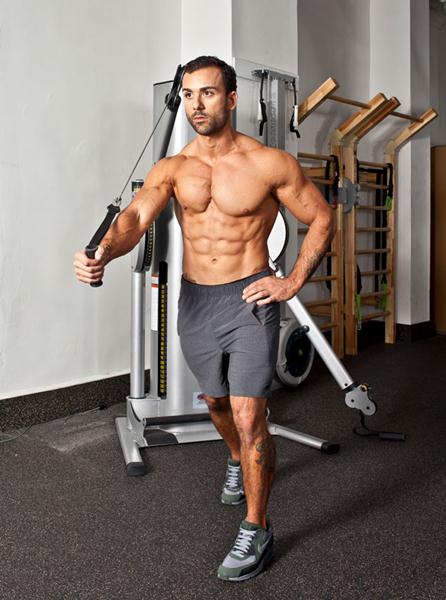
Angelo Grinceri is the author of the upcoming Dragon Door title Intrinsic Strength Training and has been featured in People, Galore, MSN, Yahoo, EatThisNotThat, Cheatsheet and Gear Patrol.
As a child, Angelo excelled at sports like biking, motocross, football, weight lifting, track, and cross country. During his high school years he became obsessed with bodybuilding. Bodybuilding gave Angelo the body of a super hero, but without super hero abilities. He became too stiff to enjoy his favorite sports, too bulky to wear his favorite clothes, and suffered from chronic shoulder and back pain. Angelo finally realized that all of this muscle didn't translate to full body strength—he was only strong and comfortable on machines and in a single foot position at one time.
Angelo embarked on a new quest, studying pain management, compound and dynamic movement training, advanced calisthenics, movement screening, and holistic nutrition. After years of experimentation, he developed IST as an answer to isolation-based resistance training.
Adrienne Harvey
Annihilating Plateaus for Steady Strength Progress
A Troubleshooting Blueprint for You and Your Clients
Over the past few years, Adrienne has been refining a detailed but easily-practiced process of troubleshooting strength and rep plateaus. These step-by-step ideas can be used in your own training, but their full value is best demonstrated when training and creating programs for others.
Using a series of questions you can ask yourself or others, Adrienne reveals how to determine the sometimes less-than-obvious blocks to achieving the next kettlebell press PR or adding more reps to a pull-up. This same method is also helpful for motivating otherwise frustrated clients—while empowering them to troubleshoot their own performance issues in the future.
Microscope or Telescope
With less obvious plateau-creating issues, the problem can be very small and technical, or systemic to the degree that we haven’t considered it. Uncover the sometimes hidden reasons that you aren’t making that next rep—and why the issues aren’t always purely physical.
A Multi-Prong Solution
How to create a training program (or recovery plan) to work on and eliminate the issues we discover. How to program for multiple issues while keeping client/student/athlete interest high and sidestepping frustration. Learn the keys to creating custom intermediate steps, drills, and rep ranges in training programs.
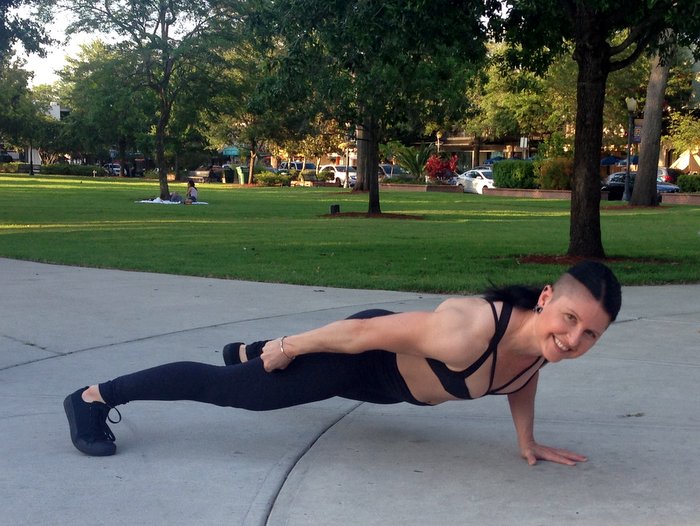
How the Process Differs in Your Training vs. Training Others
The principles are the same, but when training others, it’s important to be observant while asking the client or student to observe themselves. The questions we ask can have the double benefit of finding the issue and teaching the client or student how to be that much more observant and proprioceptive. Ultimately, motivated clients can also learn how to apply this approach on their own.
Case Study and Live Example
In this presentation, Adrienne will work through a couple of short real-life case study examples, and hopefully have time to help someone from the audience change or refine their workout program, to help them break through to the next level on their chosen strength or skill movement.
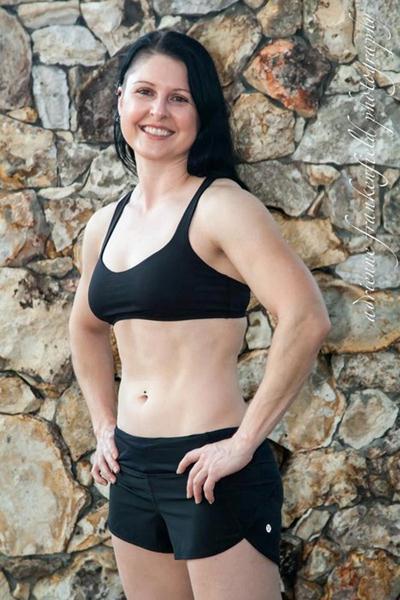
Adrienne Harvey is a Senior PCC, RKC-II, DVRT, CK-FMS, and author of the upcoming Dragon Door title, Eat Strong, Lift Strong, Move Strong: Proven Secrets for Strength, Power and Robust Energy. She has enjoyed helping teach PCC workshops world-wide since the very beginning, along with leading some of the new one-day Strength Calisthenics Certification (SCC) workshops. She has been interviewing some of the top names in the fitness industry for DragonDoor.com’s Success Stories series for nearly six years. She often combines the insights and patterns from these interviews and her fitness and teaching experience with a lifelong interest in generalized problem solving and troubleshooting. Find over 100 workouts, recipes, and blog posts on her website http://giryagirl.com
Steve Holiner
DVRT and RKC: United by Strength
There is often confusion between systems, implements and application. As some get tied into system specific training dogma, the potential benefits of correctly implementing multiple systems are lost. You don’t need to be a kettlebell person or sandbag person. You can be the strong person that moves well reaping the awesomeness of being both.
DVRT Ultimate Sandbag Training and the RKC’s Hardstyle Kettlebell Training are two systems that can provide incredible benefits to both home users and coaches when used in unison.
Discover how to improve the kettlebell Get-up and Swing using DVRT drills. More importantly, learn how to view movement and exercise selection through the lens of the DVRT Ultimate Sandbag Training System. Come and learn first hand how DVRT and the RKC are united by strength!
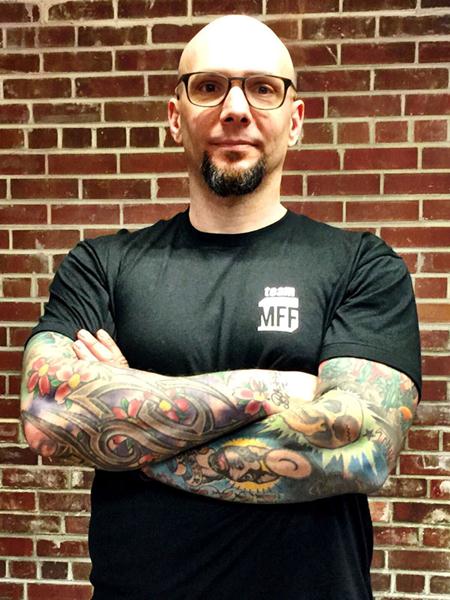
Steve "Coach Fury" Holiner is a Master RKC, a Master DVRT and an Original Strength Lead Instructor. Fury first got involved in strength training with the simple goal of becoming a strong father to his kids. Later he would find a love of kettlebells and Ultimate Sandbag Training while practicing Muay Thai Kickboxing at the renowned Five Points Academy in New York. A former Visual Effects Executive Producer, Steve’s passion for strength would soon find him becoming a fulltime strength coach at Five Points.
Now at Mark Fisher Fitness, his roles include semi-private training, group classes and programming. Coach Fury teaches workshops and certifications internationally and has worked with the Marines in San Diego and Japan. Fury also frequently writes for the Ultimate Sandbag Training, RKC and MFF blogs. Anyone visiting NYC should stop by and visit him at Mark Fisher Fitness.
Dan John
Strength Training for the Elite Athlete
Enough is Enough is Enough is...
There is an odd moment in every athletic career: the foundation has been laid, the blanks have been filled and the checklist has been checked.
Now, comes the dilemma: now what? Do we make the foundation even wider?
Appropriate attention to arousal, tension and heart rate is a lost gem of elite training. Understanding that "enough is enough" when it comes to most qualities is the "secret" to elite performance. Seeing performance as more important than practice is so obvious that not only do most people miss, most people seem to actively strive to practice better than performance.
There are some simple tricks, tools and ideas to teach the athlete, the performer and the coach to emphasize performance. In this workshop, Dan John will circle around the key methods to not only maintain elite performance but improve elite performance without destroying the career.
The Dan John Interview
Dan John, Master RKC, has spent his life with one foot in the world of lifting and throwing, and the other foot in academia. An All-American discus thrower, Dan has also competed at the highest levels of Olympic lifting, Highland Games and the Weight Pentathlon, an event in which he holds the American record.
Dan spends his work life blending weekly workshops and lectures with full-time writing, and is also an online religious studies instructor for Columbia College of Missouri.
As a Fulbright Scholar, he toured the Middle East exploring the foundations of religious education systems. His books, on weightlifting, include Can You Go?, Before We Go, Intervention, Never Let Go, Mass Made Simple and the co-authored Dragon Door title Easy Strength.
Danny Kavadlo
How to Train and Coach Your Way to Pull-Up Greatness
Plateau-Busting Tips and Proven Strategies from a Modern Day Calisthenics Master
Danny Kavadlo will cover everything you ever wanted to know about pull-ups: how to teach them, how to train them and how to maximize your own results, as well as the performance of everyone you come in contact with.
From the humble bar hang, to the classic chin-up, to the mighty muscle-up, Danny will take you on an interactive journey, breaking down pull-up progressions from the most basic fundamentals, to the highest attainable levels, and everything in between.
Additionally, Danny will lead the audience through a discussion of the ancient calisthenic gyms of yesteryear and how they relate to the modern movement known as the Street Workout. This presentation is part history lesson, part coaching demonstration and part "pull-up jam" all rolled into one!
Danny’s exhibition is geared toward the beginning practitioner just getting started on their fitness journey, as well as the elite athlete looking to take their bar performance to the next level...
The Danny Kavadlo Interview
Danny Kavadlo is one of the world's leading authorities on calisthenics and personal training. He is known globally for his minimalist philosophy, feats of strength and motivational gifts.
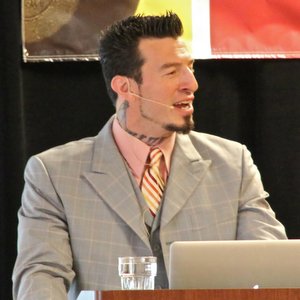
Danny Kavadlo is the Dragon Door author of two #1 Amazon bestsellers, Strength Rules and Diamond-Cut Abs, as well as the cult classic Everybody Needs Training. Danny has been featured in the New York Times, Men's Fitness, and the New York Post. He is a regular contributor to Bodybuilding.com and TRAIN magazine.
When not working one-on-one with clients in his native New York City, Danny travels the world as a Master Instructor in Dragon Door's internationally acclaimed Progressive Calisthenics Certification program, the PCC.
Mike Krivka
Keep 'Em Coming Back!
How to design a group training WOD that is fun, safe and effective
Group workouts (WODs) are probably the most effective way to reach the most people in the shortest amount of time. While one-on-one training is great for some clients, especially if they need a lot of help, group WODs will allow you to meet the training needs of more people per hour – short of cloning yourself!
Group WODs can be used for anything from two people to twenty-five and still be fun, safe and effective. The key to running group workouts and designing amazing WODs is to understand what your client’s are looking for in a workout. It doesn’t matter if they are a recent "coach potato" or Tier One Spec Op personnel – they are all looking for pretty much the same thing. They are coming to your gym looking for a WOD that is Challenging, Scalable and Fun. What do I mean by Challenging, Scalable and Fun?
Challenging: the WOD stretches them both physically (via skill, strength, endurance, etc.) and mentally (via drive to work hard and keep pace with others)
Scalable: all the elements of the WOD can be modified so that it is within reach of any and all skill and fitness levels
Fun: the WOD keeps the athlete moving from technique to technique, engaged both mentally and physically, and promotes interaction with others for confidence, support and engagement. BTW – this might be the most important of the three
In order to be able to reach the most people, and keep them engaged throughout the whole session, you’re going to need to do some planning. Scratch that – lots of planning! You’re going to need to plan out approximately 60 minutes of non-stop movement. Those sixty minutes is going to fly by and you’re going to need every one of them in order to prepare them for the WOD and prepare them to go home. The goal of this presentation is to give you all of the pieces you are going to need to put together a full hour of training that your clients will love and be anxious to come back for more!
The Keep ‘Em Coming Back! Presentation is going to cover the following topics and more:
- Why group training?
- What makes a really great WOD?
- How to plan your group training time
- The power of Scaling and why you need to master this skill
- Choosing the best tools for your "WOD Toolbox"
- Powerful types of group training WODs
- The elegance and impact of simple programming to produce results
- How to "stimulate" not "annihilate" your athletes
- Building your own group training WODs

Michael A. Krivka, Sr. has been involved in Russian Kettlebell training since 2001 and is a Master RKC. Mike is a highly sought after instructor and has traveled coast-to-coast teaching kettlebells to a wide variety of people (SWAT/SERT teams, USMC officers and enlisted personnel, MMA and BJJ practitioners and even "Soccer Mom’s and Dad’s").
In addition, he is the author of a bestselling e-book (Code Name: Indestructible), contributing author of CrossCore HardCore, has been featured on the Dragon Door website as a regular contributor, and is featured in several upcoming training videos and books.
His martial arts background spans early training in Tae Kwon Do, Judo, Wrestling, Western Fencing, Arnis, Escrima, Gung Fu and Ninpo Taijutsu (Ninjutsu). His lifelong devotion to the martial arts is highlighted by over 30 years of training in JKD Concepts (the martial art pioneered by Bruce Lee) and the Filipino Martial Arts (Kali, Escrima, Arnis and Maphilindo Silat) where he is a Full Instructor under Guro Dan Inosanto.
Mike runs CrossFit Koncepts and a martial arts school Martial Arts Koncepts.
Keira Newton
How to Retrain Your Movement—and Attain the Perfect Athletic Balance of Mobility, Flexibility and Strength
According to Keira Newton the perfect athlete has a well-rounded combination of mobility, flexibility and strength. If you have a decent amount of all three, you can probably do very skilled kettlebell or Olympic lifts, difficult yoga poses, and groundwork.
What Keira has found as an owner of a gym, and Master RKC who travels around the US to teach, is that most people have too much of one, or not enough of any. Your repetitive movements pattern your tightness.
If you are a strength athlete, you have patterned your muscles to contract consistently to get strong. This is a good thing, but it is also training the body to get tight through repetitive tension and contraction.
Keira has been doing kettlebells for 10 years. She had always been fairly flexible and never had a problem with mobility. However—after practicing hard style kettlebells, increasing her tension, and never stretching—her natural mobility became very limited.
After an abrupt wake-up call two years ago, Keira set out to regain her natural mobility and flexibility. Keira discovered such great pleasure in this process, that she has now become as flexible and mobile as she was when a child.
In her presentation Keira will give you an interactive blueprint on how to retrain your movement so you can regain, retain or enhance your natural flexibility and mobility.
Discover the Keira Newton model that starts with joint mobilization, moves to deep stretching and then combines the two together into a flow. Learn how to move mindfully—to create greater ease, freedom and grace in all your movements.
This attention to movement with stretching and mobility can take a strength athlete to the next level. Limitations in the body are unlocked, and the body is free to lift with more range and depth.
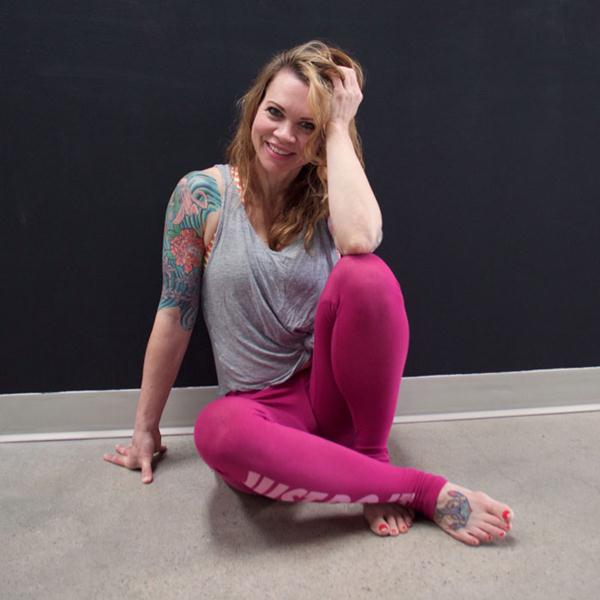
Keira Newton is one of the foremost leading experts on kettlebell training, and is one of only two women in the world who hold the title of Master RKC. With over 10 years of experience, beginning with her Feldenkrais certification in 2001, Keira has seen it all and has worked with every type of client—from chronic couch potatoes to elite athletes.
As the mother of two girls and the owner of Dynamic Fitness in Santa Fe, NM, Keira balances her hectic schedule with her own personal brand of daily mobility and stretching practice. This short daily practice combined with her decade of mobility and fitness coaching have made her an authority on helping people reach levels of flexibility and mobility they never thought possible.
Keira has helped men and women all over the country achieve and even surpass their health and fitness goals with her straight-shooting coaching style and keen eye for spotting what's holding someone back.
Phil Ross
How to Attract Your Optimal Client Mix—and Retain Them Year After Year…
You are a skilled, knowledgeable, charismatic, tough, dedicated, caring personal trainer. When it comes to deserving a veritable horde of hyper-loyal, high-achieving clients—you appear to be the complete package… And yet, truth is, you struggle to get ahead and make ends meet…
What’s up? Well, one big reason for your relative lack of success is failing to recognize who you should be training—and how to keep those folk coming back for more, year after year…
Master RKC and champion fighter Phil Ross was just that guy—until he learned the hard way who best to train and how to train them…
Who you train and who you want to train may be two different animals altogether. Coming from a competitive athletic background and being a longtime fighter and wrestling coach, Phil wanted athletes.
When Phil first embarked on becoming a Kettlebell Instructor, training athletes was his primary focus; fighters, wrestlers, High School and Junior High School athletes. Training high level performers is fun, sexy, attractive and challenging—right?
Phil wanted to train these aspiring young athletes and build his reputation. He had notions of flying all over the country and teaching college and professional-level strength coaches the "secrets" of his new found knowledge.
Well, that’s not exactly what happened….
Did Phil and does Phil still have success personally training athletes and fighters at his gym? Yes. Does he train instructors of high school, college and professional athletes? Yes.
But does he generate the bulk of his income from these groups? No.
So where does he have his greatest impact?
Phil had noticed that his clientele had changed from when he started. Athletes are fickle. The higher the level, the more fickle they become. Phil started instead to focus on his students in their 30s, 40s and 50s. How did this happen? His classes started to grow through doctor and physical therapist referrals, advertising and word of mouth.
Phil is a minimalist, focusing on the 3 Bs, but primarily the first two: "Bells, Bodyweight and Bands". The rest is all in the programming.
After many years of experimenting with different tactics, Phil has devised a program that has proven to yield the best results for the greatest amount of students. He will share the details of that program with you in this presentation.
Phil will also address how to train students of varying experience and ability levels in the same class. Discover how to challenge the more advanced, develop the intermediate and train the beginners in a fashion that doesn’t intimidate them, but inspires them to achieve.
The Phil Ross Interview
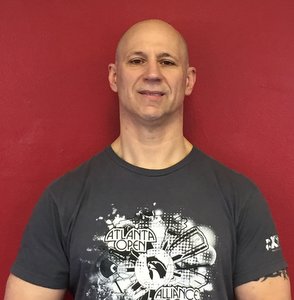
Master RKC Phil Ross is a Black Belt Hall of Fame martial artist. His series of self-defense videos (called S.A.V.E.) were rated #1 by two separate nationally recognized martial video reviewers. Phil’s Advanced Russian Kettlebell video is ranked in the Top 10 of kettlebell workout videos. Phil produced The Kettlebell Workout Library video training series. He is the author of Survival Strong and the upcoming Dragon Door title, Ferocious Fitness.
Max Shank
Ultimate Program Design for Maximum Efficiency
(in and out of the gym)
- How to get people started with exercise from level zero using scientific principles of habit formation.
- How to differentiate athletes/clients based on their commitment levels and how to set realistic expectations.
- The value of mini-sessions and habit-based exercise.
- How to organize the components necessary for building a balanced program (Athleticism Pyramid).
- How much stimulus is necessary to facilitate an adaptation and how to find the sweet spot.
- Bodypart splits or full body training sessions?
- How mobility fits into a training program, and how much time is necessary relative to the other pieces.
- How to structure a strength training program for maximum efficiency—and where high and low reps fit into the plan.
- How to train endurance and how to fit it into a training session (or not).
- Periodization—cutting through the confusion and focusing on the important things.
- Respecting the cyclical nature of training and preparing for it properly.
- How to combine different "styles" of training (barbell, kettlebell, bodyweight, etc)
The Max Shank Interview
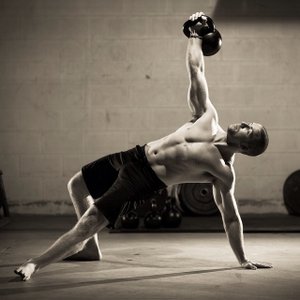
Max Shank has written three books (Ultimate Athleticism, Master The Kettlebell, and Simple Shoulder Solution) and taught courses all over the world. He is a coach, and owner of Ambition Athletics in Encinitas, CA). He also competes at a high level in a wide variety of sports ranging from Muay Thai and Jiu Jitsu to Scottish Highland Games. Max is probably the only athlete in the world to have competed at the Highland Games World Championships and Brazilian Jiu Jitsu World Championships one week apart from each other. His abilities as a coach run the full spectrum, being able to help both elite athletes and average Joe’s get "better every day."
For all his athletic ability, Max champions an approach to training that emphasizes health, fun, and a lifetime of sustainable progress. His programs outline straightforward, practical methods that allow a beginner to make steady, yet dramatic progress—while providing strategies for even the most accomplished athletes to take their abilities to the next level.
Max's desire to constantly improve his knowledge and personal skills has led him to be a sought after international presenter of his unique and pragmatic blend of strength, flexibility, health, and overall athleticism.
Prefer to register by phone? Call 1-800-899-5111.
Return to Health and Strength Conference 2016
